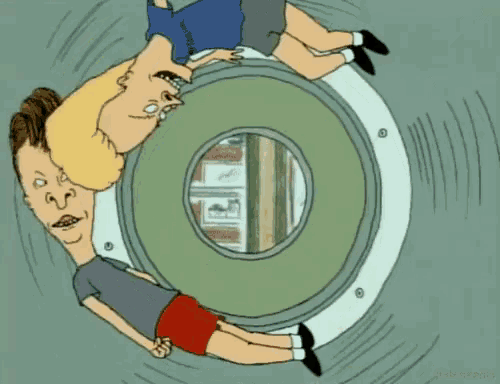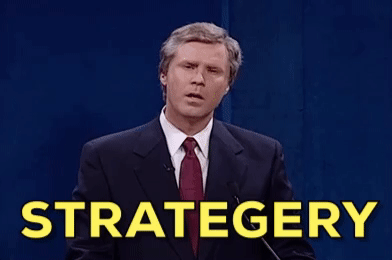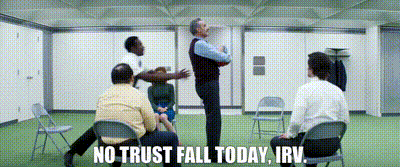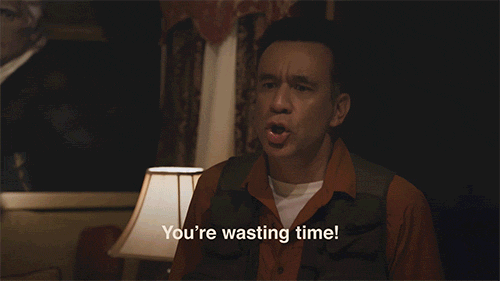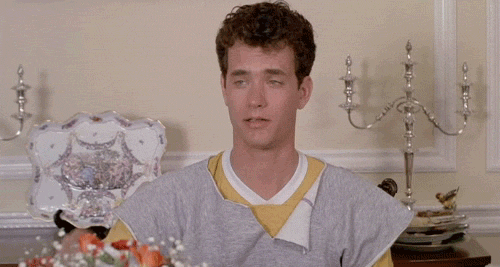5 Hidden Costs of Bad Branding
Businesses go through a LOT of different phases in the first five years. We can’t even tell you the number of times we’ve changed our core offerings, pivoted in our messaging and revised our marketing tactics. Sometimes it feels like we’re stuck in the spin cycle of reframing, refining, rewriting and relaunching.
We understand that it can seem like a mistake to invest your cold hard cash in branding when you’re still going through those early phases. What if you outgrow that branding immediately? It’s like buying Prada for a baby!
But here’s a harsh truth: Bad or inconsistent branding quietly costs more in the long run.
We were chatting recently with a salon owner in our small business circle—six years ago, when her business was new, she got a proposal from a brand designer for $7K. The scope of work included a full logo and visual identity design, a website design and some light photography to fill out the site and get her up-and-running on social media.
She didn’t take the offer. At the time, $7K felt like a titanic amount of money, and she was afraid of spending so much on assets that—she thought—could be acquired on the cheap. Instead, she had her nephew (not a designer) whip up a logo, figured out how to DIY a Squarespace website and had her receptionist take some iPhone photos.
But nothing matched, and nothing aligned with her own vision for her brand. She was trying to position her salon as upscale—a premium, high-quality service in a trendy Brooklyn neighborhood. But there was nothing upscale about her public-facing materials.
She estimated that, since then, she’s paid 4x that original amount on band-aids to fix parts of the whole: a logo update here, a packaging redesign there; bad photos, better photos, great photos; a move to a new website platform because a digital marketing agency convinced her it would “fix SEO,” and then a move back into Squarespace.
It’s impossible to estimate the amount of potential high-ticket clients she lost along the way because her brand didn’t convey the quality of her work. She’s frustrated and exhausted after years of chasing the brand alignment she could have had at the very beginning, as a solid foundation to build on.
When we asked her if she would go back now and spend the $7K, she said, “In a heartbeat,” knowing she would have made that money back in sales more quickly with a brand that connected with the right people.
You rarely get a second chance at a first impression. It’s a cliché, but it’s true.
Of course we’d never want anyone to invest in branding if they truly could not afford it. But we would encourage our fellow business owners to consider budgeting for branding as early as possible in the life of your business.
Beware of piecemeal or DIY solutions—they might work for a while, but they carry a TON of hidden costs, eating away at your limited time, energy and money. If you don’t invest intentionally early on, you spend years making up for confusion, missed opportunities and lost trust.
You already know our take: branding is everything. It drives sales, determines which customers you can (and can’t) attract easily and underpins how your team develops and deploys marketing materials.
Without a clear, cohesive and value-aligned brand in place, resources will go flying out the door faster than you can say “strategery.”
Here are five ways businesses end up paying for bad branding in the end:
1. When you confuse, you lose.
Confused customers don’t buy. They scroll past or click away.
If your web design and messaging don’t clearly communicate who you are and what you do, you won’t have anyone’s attention long enough to guide them to the point of sale.
2. You’re wasting your marketing dollars.
Running ads or boosting posts without strong brand foundations is like pouring water into a leaky bucket.
When your branding is inconsistent, every campaign starts from scratch. You spend extra time explaining who you are, what you do and why it matters, constantly reintroducing yourself to your audience instead of reinforcing brand recognition.
3. People don’t trust you.
A blurry logo or generic tagline might seem “good enough,” but first impressions matter, and people judge your business within seconds. If your logo feels dated or your website looks DIY, it can subconsciously signal unreliability—even if your work is excellent.
Strong branding shows your professionalism and trustworthiness, and makes your audience instantly confident that you can get the job done.
4. Inefficiency and Inconsistency
Without a clear brand system (colors, typography, voice and messaging), every new flyer, social post or web update turns into a guessing game. Your materials never feel cohesive—and your team has to reinvent the wheel every time they work on a marketing asset. You lose consistency and momentum, and before long, you’ve spent more money on wasted hours than a strategic rebrand would’ve cost in the first place.
A cohesive brand toolkit saves countless hours and helps your team move faster and more efficiently.
5. You can’t charge what you’re worth.
It’s tough to charge premium rates when your brand doesn’t reflect premium quality. Great branding communicates value before you ever get to the sales pitch—helping you attract qualified leads clients who are happy to pay what you’re worth.
The Bottom Line
A strong brand makes it easy for people to describe you, remember you and refer you.
Bad branding does the opposite. If your business doesn’t have a clear story, your clients can’t become your ambassadors—and you lose out on organic growth that should be effortless.
When you build a strategic, cohesive brand from the start, you create something bigger than a logo or a color palette—you build a real, emotional connection. You attract people who share your values, believe in your mission and want to be part of what you’re building. You create loyal brand fans who will stick with you through growth, pivots and new chapters. They’ll roll with the changes. Just like REO Speedwagon promised.
Investing in branding up front isn’t about aesthetics—it’s about setting your business up to thrive long-term.
When your visuals, messaging, and website work together, you spend less time convincing people and more time serving them.
Ready to stop patching and start building?
We can help you design a strategic, cohesive brand that connects deeply with the people you serve.


